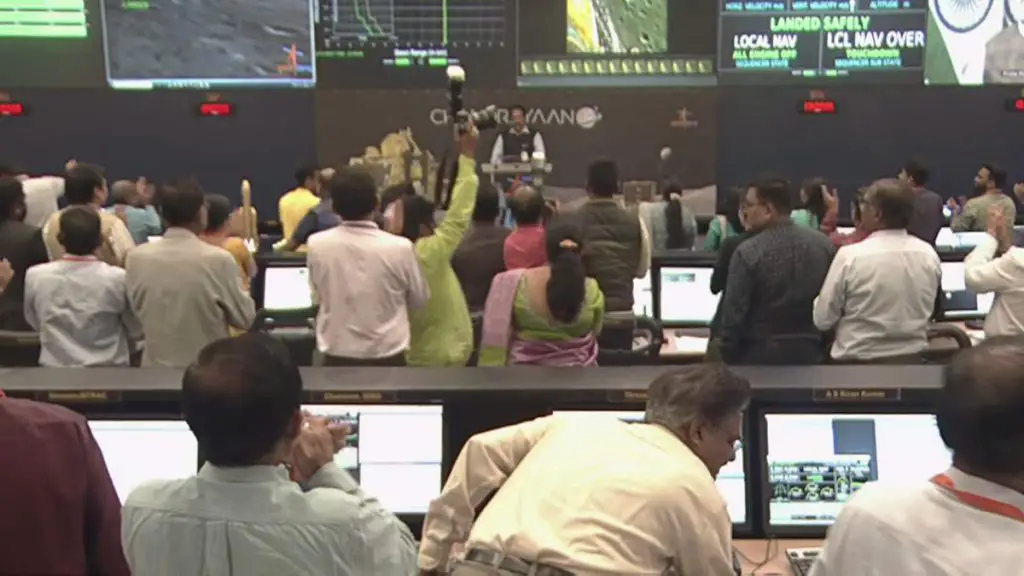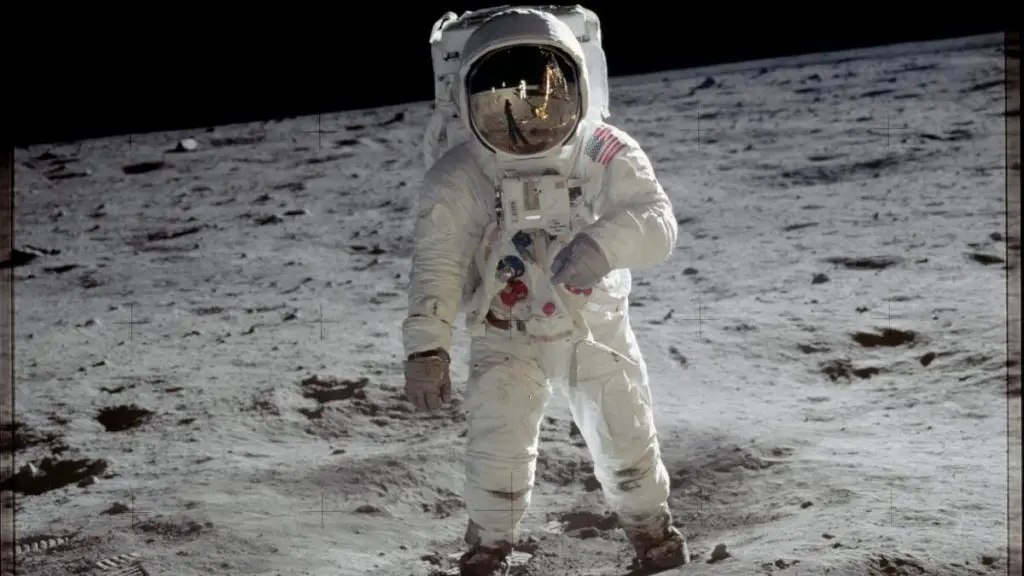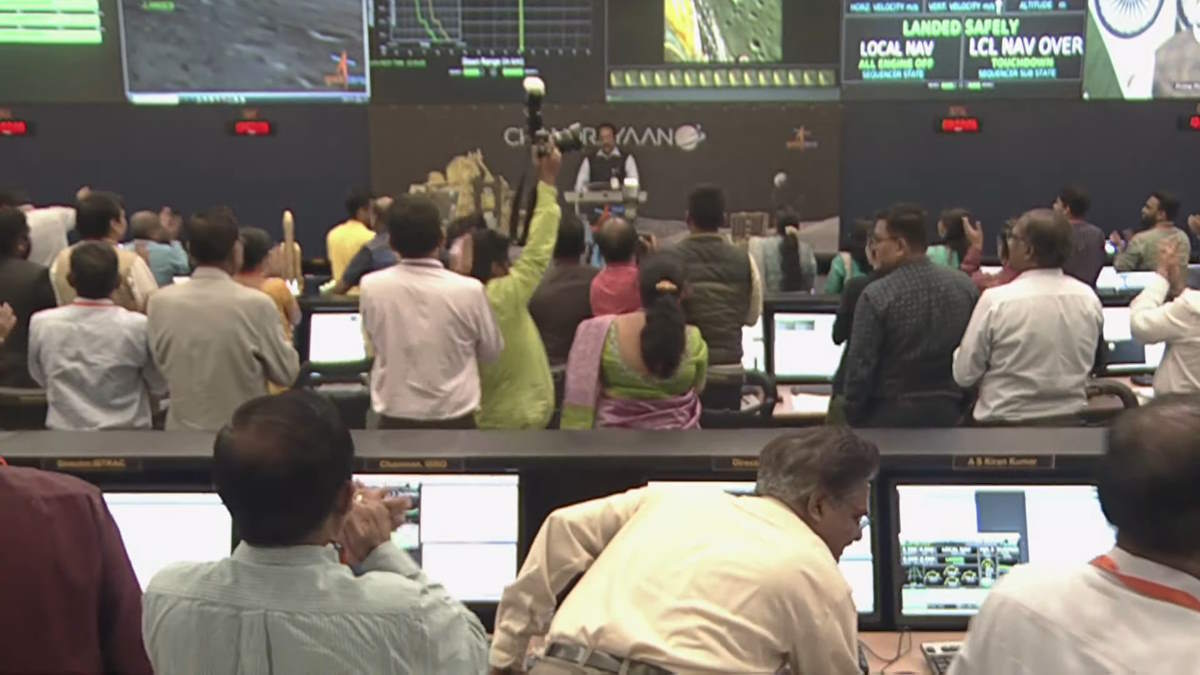India’s recent Chandrayaan-3 mission successfully touched down on the moon on August 23, 2023, marking a triumphant moment following the 2019 failure of its predecessor, Chandrayaan-2.
As the third installment of ISRO’s Chandrayaan program, Chandrayaan-3 (Moon-craft in translation) embarked on its journey with the Vikram lander and Pragyan rover, mirroring the Chandrayaan-2 setup. With its propulsion module functioning similarly to an orbiter, the mission carried its components to a 153 x 163 km lunar orbit.
The need for Chandrayaan-3 arose after a software hiccup caused Chandrayaan-2’s lander to crash after its lunar orbit insertion. Chandrayaan-3 launched on 14 July 2023, at 2:35 pm IST, with its lander and rover settling near the lunar south pole on 23 August 2023. The significant landing event unfolded at 5:34 am PT (6:04 pm IST), making India a pioneer in several lunar achievements:
- The first nation to land and operate a rover on the Moon’s south pole.
- The second country in the 21st century, after China, to achieve a controlled lunar landing.
- Fourth nation in history to execute a controlled moon landing.
- In the backdrop of this success, Russia’s Luna-25 mission, which aimed to surpass India’s feat, faced an unfortunate crash after disconnecting from their space agency, Roscosmos.

Chandrayaan-3
ISRO initiated the Chandrayaan-3 mission using their “Launch Vehicle Mark-III” from the Satish Dhawan Space Centre in Sriharikota. Constructed with a modest budget of under $75 million, Chandrayaan-3 encompasses a propulsion module, lander, and rover equipped with seven scientific tools.
Mission Objectives
- Safely achieving a soft landing on the Moon’s surface with the lander.
- Showcasing the rover’s ability to navigate and operate on the Moon.
- Conducting on-site studies and experiments using lunar materials to gain insights into the Moon’s composition.

Related: Moon landings, all-time list
Payloads
Lander
- Chandra’s Surface Thermophysical Experiment (ChaSTE) will measure the thermal conductivity and temperature of the lunar surface.
- Instrument for Lunar Seismic Activity (ILSA) will measure the seismicity around the landing site.
- Langmuir Probe (LP) will estimate the plasma density and its variations.
Rover
- Alpha Particle X-Ray Spectrometer (APXS) will derive the chemical composition and infer the mineralogical composition of the lunar surface.
- Laser Induced Breakdown Spectroscope (LIBS) will determine the elemental composition (Mg, Al, Si, K, Ca, Ti, Fe) of lunar soil and rocks around the lunar landing site.
Propulsion module
Spectro-polarimetry of Habitable Planet Earth (SHAPE) to study the spectral and polarimetric measurements of Earth from the lunar orbit in the near-infrared (NIR) wavelength range (1-1.7 μm).
Lunar Rover Specifications
- Designed with six wheels
- Weighs 26 kilograms (57 pounds)
- Can travel up to 500 meters (1,600 feet)
- Measures 917 mm (3.009 feet) in length, 750 mm (2.46 feet) in width, and 397 mm (1.302 feet) in height.
Learning from past shortcomings, the Chandrayaan-3 lander boasts enhanced sensors, software, and propulsion mechanisms. ISRO incorporated extensive testing to ensure the lander’s resilience for a smooth landing. The lander aims to explore seismic activities, near-surface plasma, and various lunar characteristics. Although the Chandrayaan-3 rover mirrors its Chandrayaan-2 counterpart, both the lander and rover have a mission span of one lunar day or 14 Earth days.
India’s lunar journey, which unveiled water molecules on the moon in 2008, has come a long way. While Chandrayaan-2’s lander faced setbacks, its orbiter remains active, playing a crucial role in the recent successful landing of Chandrayaan-3 by assisting in communications between the lander and Earth.
Sources
- Chandrayaan-3 on Wikipedia
- Moon Landings: All-Time List [1966-2025] - February 2, 2025
- What Is Max-Q and Why Is It Important During Rocket Launches? - January 16, 2025
- Top 10 Tallest Rockets Ever Launched [2025 Update] - January 16, 2025
